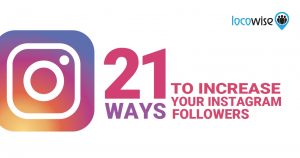We Need To Recognize, Personalize And Optimize
For years now, the story in advertising and marketing has centered on data, and the many, many ways to collect it from consumers. Less attention, however, has been paid to what to actually do with all this information, now that we’re all swimming in it. Sure, we’re deploying it to target ads and but, until recently, marketers were using data as a pretty blunt tool.
That’s probably because the data has simply been easier to collect than it is to meaningfully act upon. The technology hadn’t reached its full potential. Fortunately, times have changed. 2018 will be the year we make data truly digestible and useful in real world, real time situations. It’s the year we make old ideas about “targeting” seem laughable.
Here’s what CMOs will be looking to do with their data this year.
First, Recognize: Customer Data Platforms are changing how we analyze and utilize data. Collecting it, once an industry-wide obsession, is now a given for businesses of all sizes. What matters now is how you stitch it together, make it usable and make it available in real time.
This is the promise of CDPs, which can take data from all facets of your business, from customer support to web data, and make it actionable when it matters. No longer will the data from a customer support phone call sit separate from sales data, everything can inform each other, creating new insights and strategies to connect with consumers in real-world settings.
Then, Personalize. In many cases, bandwidth needs are too high to efficiently test and personalize advertising on a real-time, person-to-person basis. So much data is available, but we’re not allowing it to really help us. The answer? It’s time to change the operating model. The clock cycle needs to become much smaller, allowing for much more throughput, bringing us closer to the consumer for persistent context.
Does this mean we’re replacing ourselves with machines? Not at all. But it will require a new kind of creative approach, possibly even a new kind of agency, that integrates the tech deep in the process, and accounts for the mass scale and high level of personalization.
Finally: Optimize — not A/B but AI. A/B testing starts to look pretty quaint when you have a hundred versions of an ad and dozens of segments to work with. It’s far too slow, much too limited. This is where AI-driven, multivariate testing comes in. The goal of multivariate testing is to determine which combination of variations performs the best out of all of the possible combinations in real-time. When dealing with this level of complexity, AI is the only tool that can efficiently comprehend what’s happening at scale. It can even surface new patterns and segments, bringing marketers closer to optimizing for a cohort of one.
Sounds great, now what? First, CEPs (category entry points) made consumer touchpoints addressable. Now, powerful CDPs will make them intelligent. By combining data, AI and a robust new kind of creative process that can keep the human connection in our output, we’re getting closer to the holy grail — customer intimacy at scale. We’re not just throwing ads at segments of people and hoping they respond; we have the ability to have two-way conversations with the right individuals, at the right time.
(18)
Report Post






